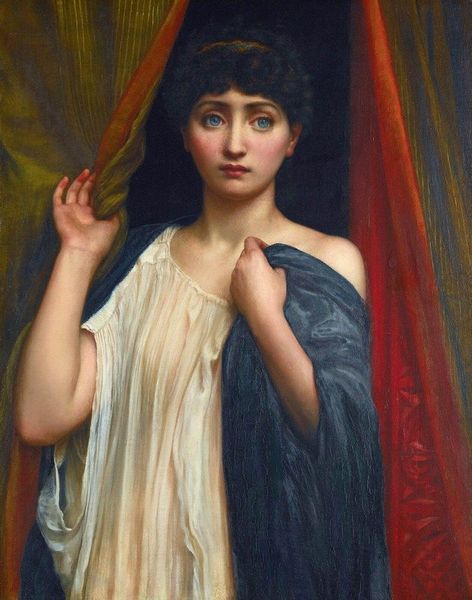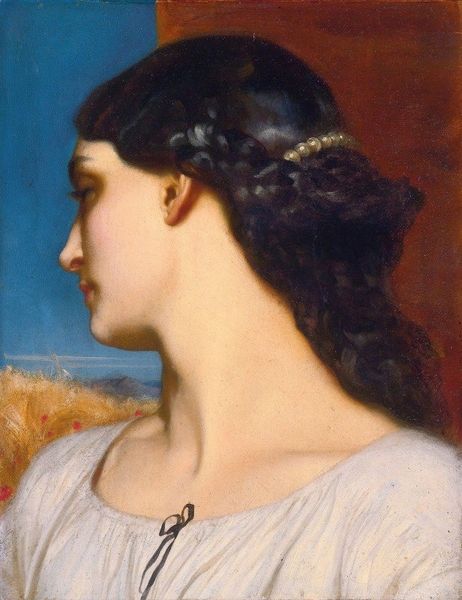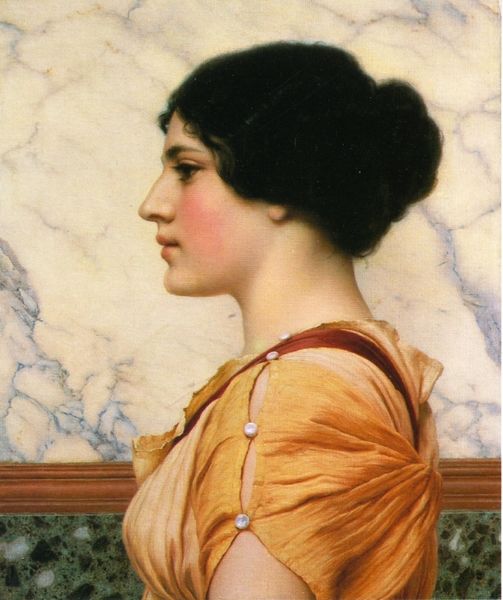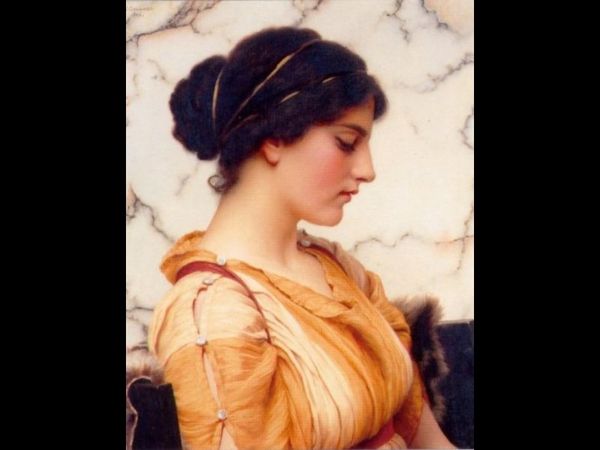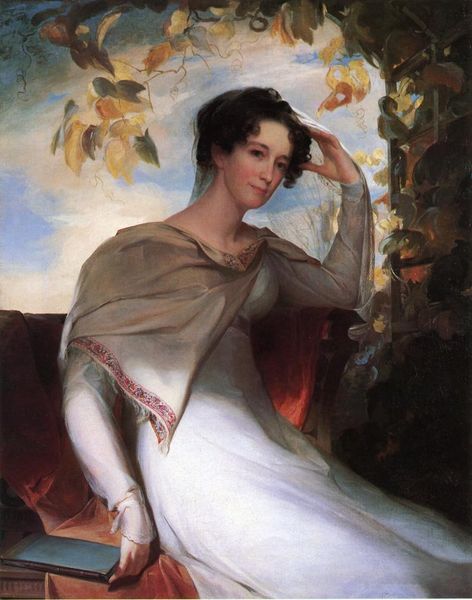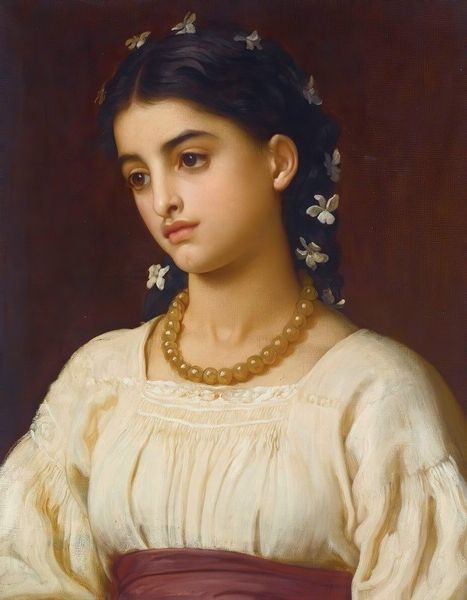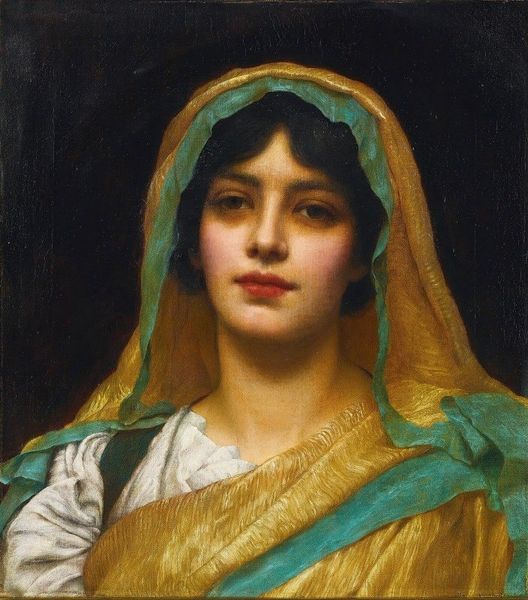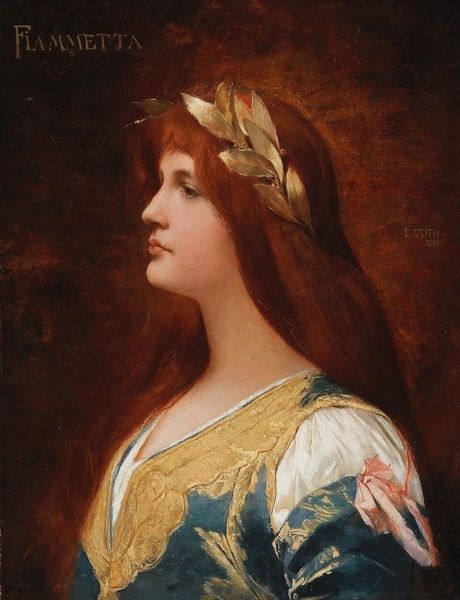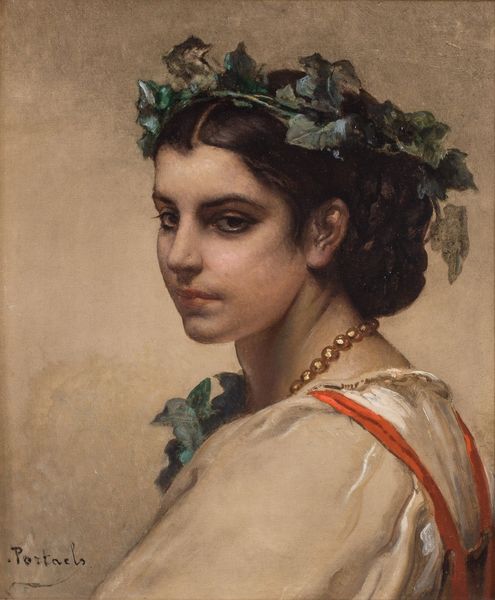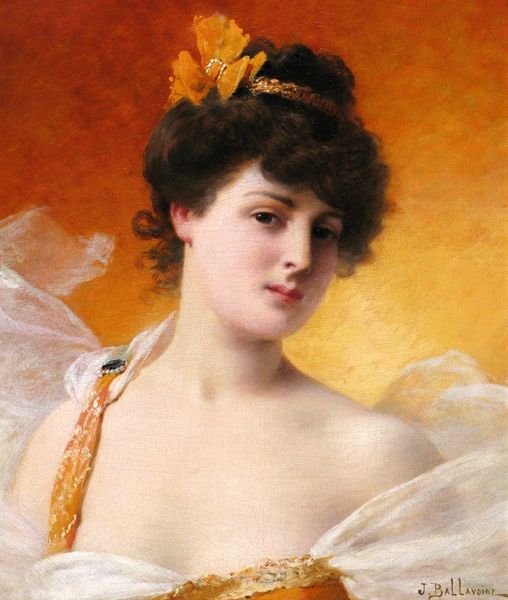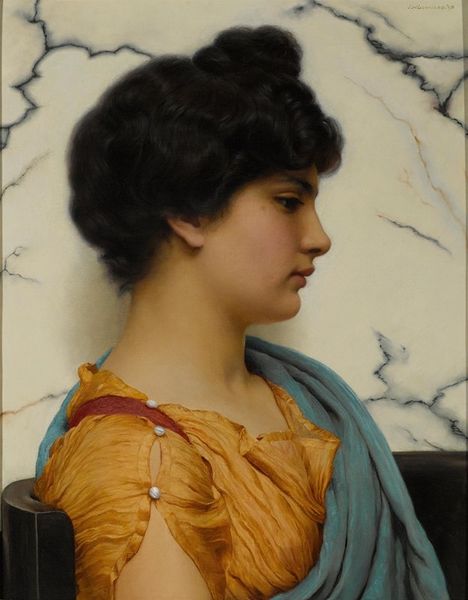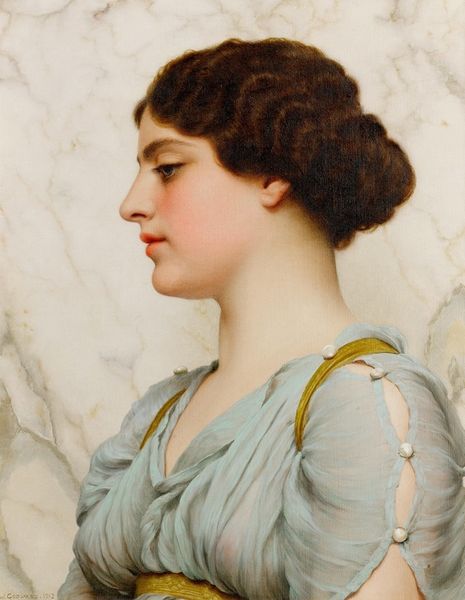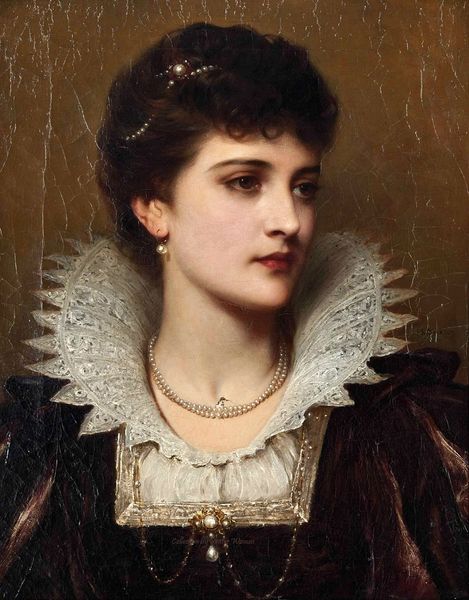
painting
#
portrait
#
figurative
#
painting
#
figuration
#
portrait reference
#
portrait head and shoulder
#
romanticism
#
animal portrait
#
animal drawing portrait
#
portrait drawing
#
history-painting
#
facial portrait
#
pre-raphaelites
#
academic-art
#
portrait art
#
fine art portrait
#
realism
#
celebrity portrait
#
digital portrait
Copyright: Public Domain: Artvee
Curator: Take a look at Frederic Leighton's painting, Pavonia. A stunning depiction rendered with oil, exemplifying a fascinating approach to the female portrait in the late 19th century. Editor: The woman’s gaze immediately strikes me; it’s so self-assured, but also distant, almost melancholic. And the peacock feathers – are they literal, or is the painter suggesting something more? Curator: Indeed. Leighton was a key figure in the Aesthetic movement, and this piece, while ostensibly a portrait, functions almost as a study in beauty. The title, “Pavonia,” refers to the peacock, emphasizing the sitter's beauty. Notice how the curves in the feather complement her neck, and the iridescent quality mimics her dark, lustrous hair. The classical references in the composition speak to idealized beauty and were commonly referenced among the Pre-Raphaelites. Editor: That explains some of the ambivalence I sensed. So much of what we call "beauty" historically has been used to trap women within these impossible archetypes, all tied to expectations of purity, decorum, and compliance with social standards. Curator: It's fascinating how these works were consumed, though. Leighton was celebrated in his day, knighted for his contribution to British art. Exhibitions were major social events, where this portrait would have reinforced ideas about beauty and status, circulated and shaped by the Royal Academy’s authority and criteria. Editor: And it’s all so… contained. Look at the window and the distant, vague landscape. She’s there but clearly kept inside the limits of her gender and class. It speaks to me about who gets to create and disseminate beauty as well, and to whose end. I’m intrigued by her almost confrontational stare though – could it suggest subtle protest or longing for a role beyond muse and figurehead? Curator: Perhaps we are looking too hard into contemporary sentiments. But the layers of meanings, perceived and intended, continue to animate the piece even in this moment. Editor: Absolutely, that's what makes engaging with these works still matter today. Pavonia's representation of controlled beauty pushes me to want to see how these themes can still be resisted or reclaimed in the present day.
Comments
No comments
Be the first to comment and join the conversation on the ultimate creative platform.
